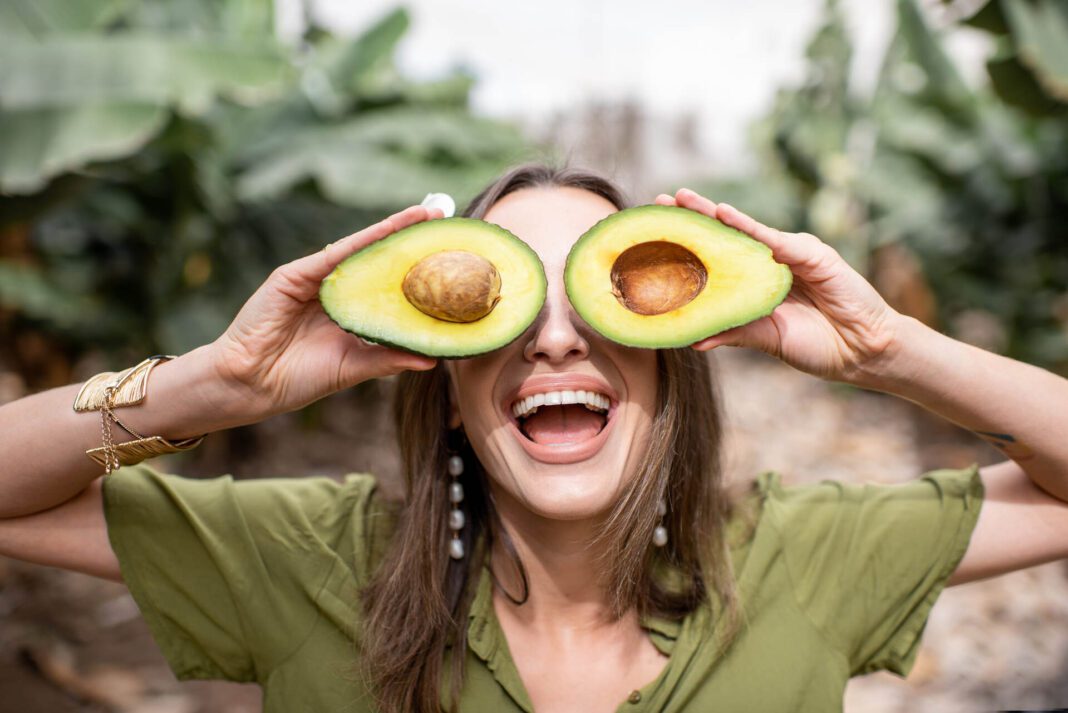Mexico is home to some of the most delicious and nutritious superfoods in the world.
These powerhouse ingredients not only pack a punch in terms of flavor, but also offer a wide range of health benefits.
From ancient grains to exotic fruits, these superfoods have been enjoyed by the people of Mexico for centuries.
Read on to discover the rich history of Mexican superfoods and start building your grocery list!
#1 Chia Seeds
Chia seeds are a true Mexican superfood with a rich cultural history dating back to the 16th century.
The word “chia” itself comes from the Mayan language, meaning “strong” – a fitting name for these nutrient-packed seeds.
In ancient times, chia was an important crop for the indigenous people of Mexico.
Chia seeds were highly valued and often presented as offerings to kings and used in religious ceremonies at temples.
The Spanish colonial government once banned chia, not because it was dangerous, but because of its use in religious rituals.
Beyond their cultural significance, chia seeds are renowned for their numerous health benefits and have been used medicinally to treat various ailments, such as leg pain and skin conditions.
#2 Huauzontle
Next up on the Mexican superfoods list: Huauzontle.
It contains protein, fiber, calcium, iron, phosphorus, and many vitamins, including A, C, E, and B, as well as antioxidants and anti-inflammatory properties.
No wonder it has been well loved in Mexico for centuries.
Like chia, huauzontle went through a period in history when it was banned.
According to Mexico News Daily, “Hernán Cortez went so far as to threaten to personally chop off the hands of anyone found growing it.”
Luckily for us, the crop did not go extinct and continues to thrive today.
Here is a recipe from chef Pablo Nicasio Soto that utilizes this delicious Mexican superfood.
Chile Ancho Stuffed with Huauzontle (3 servings)
Ingredients
- 3 ancho chiles
- 7 ounces of goat cheese
- 6 ounces of huauzontle (edible clusters only)
- 2 hoja santa leaves
- 1 white onion
- 1 clove of garlic
- 1 ounce of piloncillo
- 10 tomatoes
- 1/2 ounce of butter
Directions
- Begin by taking one branch from the bunch of huauzontle. Delicately pinch and slide your fingers along each slender stem to detach the edible clusters.
- To ensure that the vibrant flavors and health benefits of huauzontle are preserved, Pablo recommends briefly blanching the florets in boiling salted water for only 30 seconds. He uses 20 grams of salt for every liter of water. After transferring to ice water, pat dry.
- Devein the chiles and soak them in hot water with the piloncillo for approximately 3 minutes until softened.
- Finely chop half an onion and one clove of garlic and sauté in a frying pan with butter.
- In a bowl, mix the sauteed onion and garlic with the goat cheese and huauzontle. Stuff the chiles with this mixture.
- For the sauce, sauté the 10 chopped tomatoes, half an onion and one clove of garlic.
- Once cooked, transfer to a blender, add the two hoja santa leaves, and puree.
- Strain this back into the pan and simmer over low heat for 5 minutes. Adjust the seasoning.
#3 Amaranth
Amaranth was once “up to 80% of the local diet in some Mesoamerican communities.”
This grain was well loved because of its usefulness.
Indigenous Mesoamericans could eat every part of this plant – and each part was beneficial.
Amaranth is a great source of amino acids, iron, protein, and Vitamin C.
Like chia and huauzontle, amaranth was also banned by the Spanish.
According to Tasting Table, “For one Aztec festival, puffed amaranth grain and honey were sculpted into a statue of Huitzilopochtli, patron god of the Aztec capital. This effigy was carried through the streets before being cut up and eaten by the celebrants. The Spanish were incensed by this practice’s resemblance to the sharing of bread in the Christian Communion, so much so that they outlawed the growing of amaranth when they took control of Mexico.”
Naturally, this ban only made amaranth even more sought after.
Now it is common for people to enjoy amaranth treats during Day of the Dead celebrations.
#4 Tejocote Root
Tejocote root is an apple-like fruit grown in Mexico.
Also known as Mexican hawthorn root, it’s rich in vitamin C, iron, and antioxidants.
And it’s great for your immune system and your gut and helps control coughing.
Fun fact about this Mexican superfood: It is commonly used in Christmas meals and to make festive drinks, such as ponche.
#5 Spirulina
It’s hard to imagine a time when livestock was scarce in Mexico, but this was the case before the Europeans came.
As a result, the Aztecs had to get their protein from unusual sources.
One such source of protein is spirulina, which is from aged algae.
Known for its blue-green tint and its crumbly texture, spirulina was often added to the top of other dishes or used as a filling.
Today, the unique Mexican superfood is recognized for its nutritional value. It is packed with protein, iron, antioxidants, and vitamins.
#6 Chayote
One of the original Mexican superfoods, chayote was cultivated by the Aztecs and Mayans.
The delicious and healthy vegetable eventually spread to other parts of the world as explorers discovered it.
Chayote is one of the Mexican superfoods that is low in calories but high in fiber and nutrients.
The squash-like vegetable is also versatile.
You can eat it raw, boil it, steam it, bake it, fry it, or marinate it.
Here is a recipe using chayote from All Recipes.
Chayote Squash with Red Peppers and Ginger
Ingredients
- 1 tablespoon butter
- 2 chayotes, chopped
- ½ teaspoon white sugar
- 4 cloves garlic, chopped
- 1 teaspoon red pepper flakes
- 1 teaspoon chopped fresh ginger
- salt and ground black pepper to taste
Directions
- Heat a large skillet over medium heat, melt butter in the hot skillet, and stir chayotes, sugar, garlic, red pepper flakes, and ginger into butter.
- Cook, stirring frequently, until chayotes are tender, about 15 minutes.
- Season with salt and black pepper.
#7 Cacao
There is some argument about whether cacao was first discovered in Mexico or the Amazon.
No matter where it first appeared, cacao has long been one of the most celebrated Mexican superfoods.
Why? The cacao beans were roasted, ground, and mixed with water and flavored with other spices to create chocolate.
Cacao contains caffeine, which is a stimulant, and theobromine, which delivers a relaxing feeling to those who consume it.
Indigenous people recognized the different ways they felt upon eating it.
Smithsonian Magazine claims, “According to legend, the last Aztec emperor, Montezuma II, relied on a daily dose of chocolate – he reportedly drank gallons of it every day – to revitalize himself.”
In addition to being viewed as a delicacy for the upper classes, it became an important part of religious rituals and was even used as currency.
The Tasting Table explains, “In the 16th-century markets of Tenochtitlan, a single cacao bean could buy you a tamal; one hundred could buy a turkey.”
#8 Avocados
When people think of Mexican superfoods, one of the first ones that comes to mind is the avocado.
Avocados are not only tasty, but they are also packed with good fats and nutrients.
While avocados are experiencing a bit of renewed popularity, they have been enjoyed in Mexico for approximately 10,000 years.
But it isn’t just because they are good for you.
The Aztecs also believed avocados held mythological powers.
According to Avocados from Mexico, “The Aztecs believed the fruit provided strength to whomever consumed it, and in ancient Maya, the fourteenth month of their calendar (K’ank’in) is represented by the glyph for the avocado.”
One of the most popular ways to enjoy avocados is in guacamole.
Here is a recipe for Authentic Guacamole from Avocados from Mexico.
Ingredients
- 3 Ripe Hass Avocados
- 1 Roma Tomato Finely Chopped
- 1 Tbsp Fresh Lime Juice
- 1 Bunch Cilantro Finely Chopped
- 1/2 Onion Finely Chopped
- 1 Tbsp Salt
- 1 Jalapeño Seeded, Deveined, and Chopped (Optional)
Directions
- Break each avocado in half gently cutting completely around the pit and putting the resulting two halves apart.
- Prepare the avocados by smashing them into tiny chunks and until the mixture starts to get creamy using a mortar or fork.
- Finely dice half an onion and put the pieces into a small bowl of warm water for 5-10 minutes. Drain.
- Remove seeds and chop the tomato.
- Remove the seeds and chop the jalapeño.
- Chop the cilantro.
- Add onion, tomato, jalapeño, cilantro, fresh lime juice and salt to the avocado bowl.
- Lightly mix everything together with a fork until ingredients combine.
#9 Jicama
Jicama is a crunchy root vegetable that is a good source of fiber and vitamin C.
It is packed with antioxidants, is great for your gut, and is weight-loss friendly.
You can eat it raw as it has a similar texture to an apple, but it isn’t as sweet.
You can cook it and enjoy it in many different ways. It’s also a healthy alternative to carbohydrates.
#10 Blue Agave
Blue agave originates from Mexico and is being used more frequently today as a natural sugar replacement.
The agave plant was used by the Aztecs for food, drink, and medicine.
It contains a mix of B vitamins, B1, B2, B6, as well as vitamins C and K.
Today, the sap from the agave plant, aka blue agave syrup, and the powder are used to sweeten foods, as it is similar in taste to honey.


